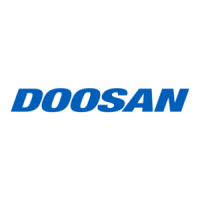Safety Section
-22-
Avoiding Lift Truck Tipover
Lift Truck Stability
Counterbalanced lift truck design is based on the
balance of two weights on opposite sides of a
fulcrum (the front axle). The load on the forks must
be balanced by the weight of the lift truck. The
location of the center of gravity of both the truck and
the load is also a factor. This basic principle is used
for picking up a load. The ability of the lift truck to
handle a load is discussed in terms of center of
gravity and both forward and sideways stability.
Center of Gravity (CG)
The point within an object, at which the whole weight
of the object may be regarded as being concentrated,
is called the center of gravity or CG. If the object is
uniform, its geometric center will coincide with its CG.
If it is not uniform, the CG could be at a point outside
of the object. When the lift truck picks up a load, the
truck and load have a new combined CG.
Stability and Center of Gravity
The stability of the lift truck is determined by the
location of its CG; or, if the truck is loaded, the
combined CG of the truck and load. The lift truck has
moving parts and, therefore, has a CG that moves.
The CG moves forward or backward as the mast is
tilted forward or backward. The CG moves up or
down as the mast moves up or down. The CG and,
therefore, the stability of the loaded lift truck, are
affected by a number of factors such as:
• the size, weight, shape and position of the load
• the height to which the load is lifted
• the amount of forward or backward tilt
• tire pressure
• dynamic forces created when the lift truck is
accelerated, braked or turned
• condition and grade of surfaces on which the
lift truck is operated
These same factors are also important for unloaded
lift trucks. They tip over sideways easier than a
loaded lift truck carrying its load in the lowered
position.

